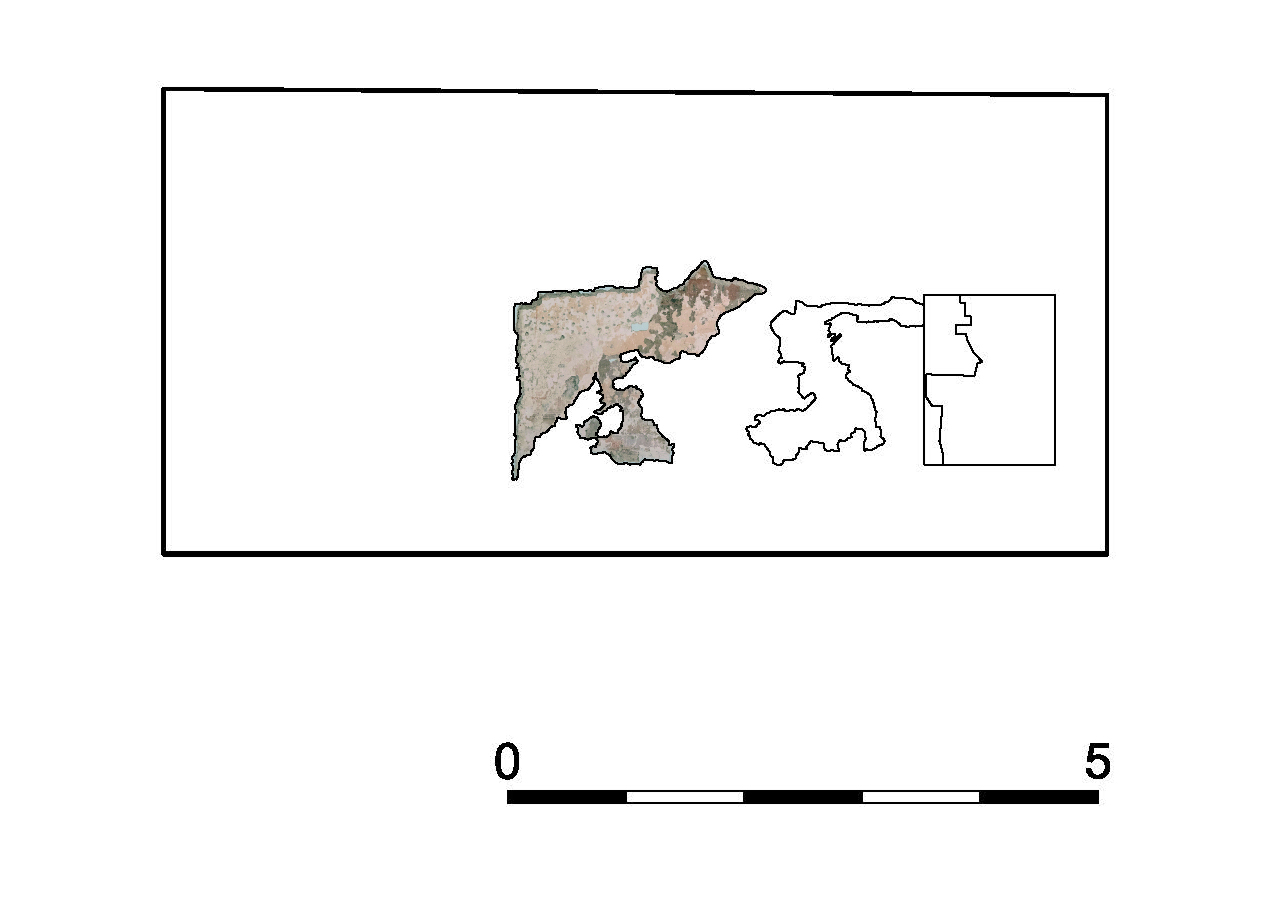



Pigments: yellow earth, red earth, organic black (bone black?)
Analytical techniques: OM, Raman, XRF
Even to the naked eye, it is apparent that the plaster consists of lime and sand. The cross-sections reveal that the plaster’s aggregate is saturated with large angular and mostly translucent grains (Fig. 1). The X-ray diffraction (XRD) analysis also confirmed the high content of aggregate mainly consisting of quartz, with only a modest amount of binders, namely calcite and dolomite. Small quantity of the latter two may also be present in the aggregate. The painting is only fragmentarily preserved, so it is impossible to discern any giornate.
Natural inorganic pigments such as yellow and red earth are prevalent and have been identified using the XRF analysis, confirming the high iron content in the samples. A certain organic black colour has also been preserved; the black colour is not a result of a lead pigment degradation.The XRF spectrum reveals a low presence of phosphorus, possibly suggesting bone black. In the case of the preserved base colour layers, the binder was lime. However, organic binders were definitely also used for the additional colour layers of the modelling, which, however, has not been preserved.
The preserved colour layers were painted on fresh plaster, although the cross-sections indicate that the plaster was nearly dry when it was painted. Especially the UVF images (Fig. 2) clearly show the almost completely formed crust on top of the plaster, which develops as the carbonation progresses, although in some places, the lime still passed into the colour layer. The colour layers are mostly very thin. In the only case where the sample contains two colour layers (red and black), it is evident that the top layer of black was also applied al fresco and that it almost merges with the red (Fig. 3).
The preserved fragment does not reveal any incisions or pouncings, nor is there any visible underdrawing. Only the basic layers of yellow, red, and, in places, black colour have survived, all applied using broad brushes and decisive strokes. The only modelling worth mentioning can be detected in the design of the architecture’s windows, where the painter used only black paint (unless it is a darkened pigment) combined with the bright plaster base to create a three-dimensional window splay.
Trate, Cmurek castle, Stage 1 (Trate), 2024 (last updated 29. 8. 2024). Corpus picturarum muralium medii aevi, https://corpuspicturarum.zrc-sazu.si/en/poslikava/phase-1-cmurek/ (13. 10. 2025).
Legal Terms of Use
© 2025 ZRC SAZU UIFS, Corpus picturarum muralium medii aevi
ZRC SAZU
France Stele Institute of Art History
Novi trg 2
1000 Ljubljana


Spodaj seznam podrobno opisuje piškotke, ki se uporabljajo na našem spletnem mestu.
| Cookie | Type | Duration | Description |
|---|---|---|---|
| _ga | Non-Necessary | 2 years | This cookie is installed by Google Analytics. The cookie is used to calculate visitor, session, camapign data and keep track of site usage for the site's analytics report. The cookies store information anonymously and assigns a randoly generated number to identify unique visitors. |
| _gat | Non-Necessary | 1 minute | Google uses this cookie to distinguish users. |
| _gid | Non-Necessary | 1 day | This cookie is installed by Google Analytics. The cookie is used to store information of how visitors use a website and helps in creating an analytics report of how the wbsite is doing. The data collected including the number visitors, the source where they have come from, and the pages viisted in an anonymous form. |
| cookielawinfo-checkbox-necessary | Necessary | 1 year | This cookie is set by GDPR Cookie Consent plugin. The cookies is used to store the user consent for the cookies in the category "Necessary". |
| cookielawinfo-checkbox-non-necessary | Necessary | 1 year | This cookie is set by GDPR Cookie Consent plugin. The cookies is used to store the user consent for the cookies in the category "Non Necessary". |
| CookieLawInfoConsent | Necessary | 1 year | The cookie is used to store the summary of the consent given for cookie usage. It does not store any personal data. |
| PHPSESSID | session | Time of session | Cookie stores information about the user's session and allow users to keep their entries during the time of visiting the website. |
| pll_language | Necessary | 1 year | This cookie is used to remember any selection a user has made about language. |
| show_preloader_once | Necessary | Session | With this cookie we remember the user's first visit. |
| viewed_cookie_policy | Necessary | 1 year | The cookie is used to store whether or not you have consented to the use of cookies. It does not store any personal data. |